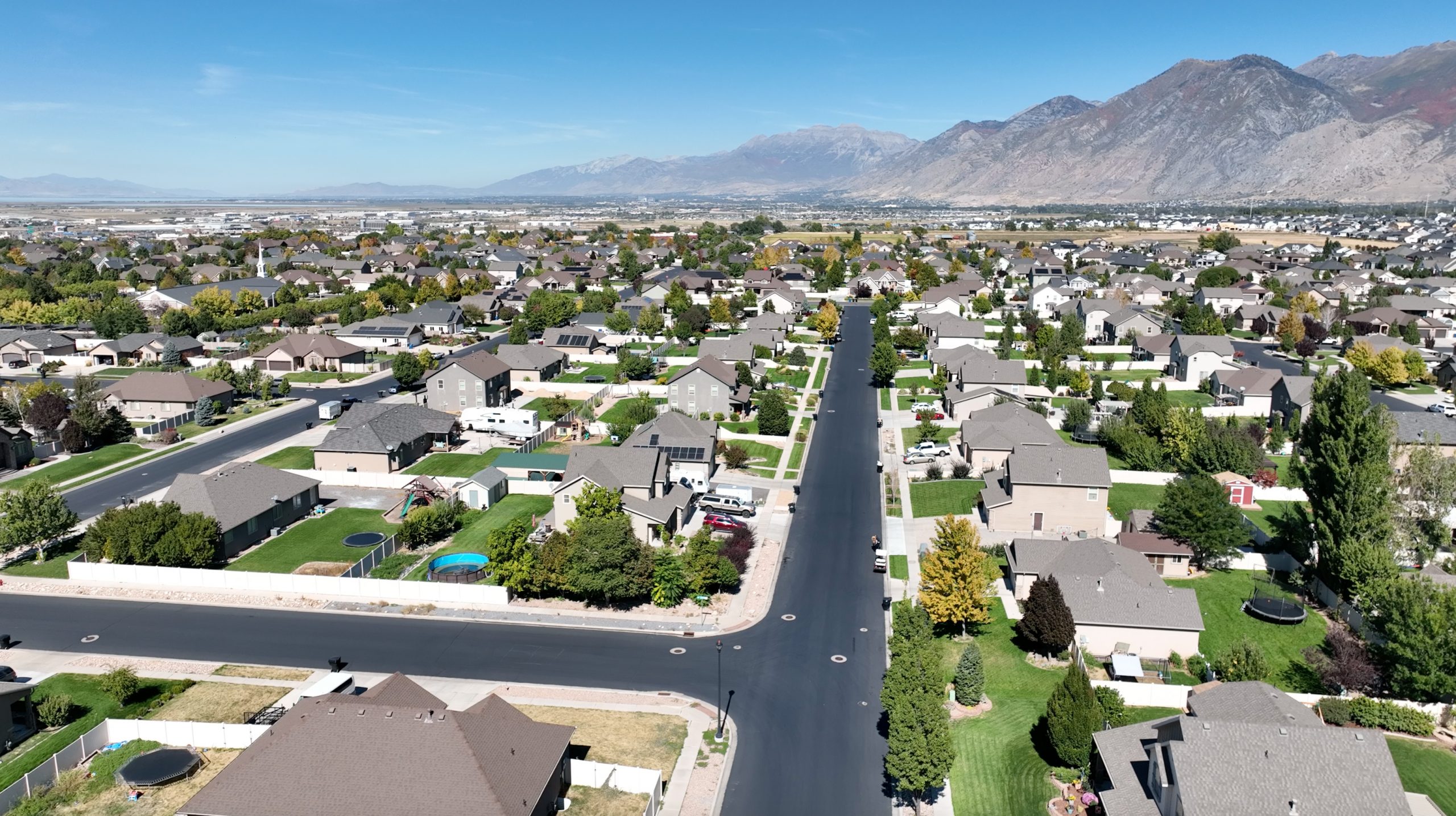
The Results Are In. Good Roads Cost Less
Switching from a worst-first pavement preservation strategy to a best-first strategy can be a challenge. But the City of Spanish Fork found that keeping good roads in good shape is a cost-effective pavement preservation method.
The Problem
Spanish Fork noticed they were continually “playing catchup”. All of their time and money was spent fixing the roads that were in the worst shape. They knew something had to change.
The Solution
They introduced a new tool into their pavement preservation toolbox, HA5 High Density Mineral Bond, that allowed them to focus on keeping their best roads in good condition for longer. This approach maximized their budget.
Spanish Fork’s Proactive Strategy
The City of Spanish Fork is situated in the southern portion of Utah’s Wasatch front. It sits between the Wasatch Mountains and Utah Lake, giving the city’s 43,000 residents easy access to a wide variety of outdoor activities. Spanish Fork is just minutes from Utah’s largest metro areas. Its proximity to Orem and Provo in the heart of Utah County means that Spanish Fork’s road network receives a large amount of daily traffic. The proximity also provides great employment opportunities, which has contributed to Spanish Fork’s growth in recent years.
The Worst-First Approach
Prior to 2009, Spanish Fork managed their road network the same way thousands of municipalities across the country do. They built new roads, performed minor maintenance, and eventually milled and overlayed those roads once the condition fell to an acceptable point.
This pavement management strategy is known as the worst-first approach. This approach is all too common. It prioritizes reacting to roads that have deteriorated to the point that they start to fail.
Any city official will likely tell you that the most frequent complaints from residents are about the roads. James Chappel, the Public Works Director of Spanish Fork, said, “What I would say to a city that’s coming from the worst-first approach is that I can certainly understand why you’re there.” He understands why cities find themselves in this situation. It’s because they are reacting to complaints.

Addressing Concerns
A resident will call and complain about a pothole or the condition of a certain road. The calls from residents make reacting to bad roads seem easy and logical. When the city responds, residents are happy to have been heard and to have the issue resolved. Fixing bad roads is also widely accepted as a good use of tax dollars. It seems like a good solution to the problem.
The trouble with a worst-first approach, though, is that the rehabilitation strategies used later in a road’s life are expensive. As your road network ages, more problems appear, more residents call, and more roads require costly repairs. Money becomes an issue.
Spanish Fork recognized that the path they were on was unsustainable. They were continually spending money to extend the life of their roads at the tail end of the road’s life.
That strategy ate up their budget, and city officials knew the cycle couldn’t continue.
The Best-First Approach
Spanish Fork decided they needed to investigate a different approach.
The best-first approach, as you might expect, is the opposite of the worst-first approach. Rather than reacting to roads in poor condition with expensive interventions, the best-first approach prioritizes keeping good roads good for as long as possible.
Switching to a more proactive approach allowed Spanish Fork to add more tools to their preservation toolbox. Today, the City utilizes a variety of treatments that are designed to meet the needs of specific roads at specific times in their life cycle. Microsurfacing, slurry seals, crack sealing, mill and overlays, and HA5 High Density Mineral Bond are all tools Spanish Fork City utilizes today.
By adding HA5 High Density Mineral Bond to their arsenal, Spanish Fork realized they could manage their asphalt more effectively throughout its entire lifecycle rather than focusing on the last half of its life. “By the time you take care of the worst first roads and make it to your best roads, your best roads are going to be in worse shape. By taking care of the best roads first, you buy yourself time and you keep those roads nice, and you can work your way back to the worst roads,” says James.
They hoped this strategy would allow them to apply treatments to more of their road network, while simultaneously helping them delay costly treatments like mill and overlays. They knew if they could push the need for those treatments off, that would allow them more time to build up the funds needed to do more of those types of repairs. “I can put down a whole lot of HA5 for the amount that say an overlay would cost. I can quadruple the amount of area that I can maintain if we get on if we get on them early.”
Related Case Studies
Salem, Utah’s booming growth brought big challenges for keeping roads in top shape. Discover how the city found a cost-effective, long-lasting solution that keeps streets looking brand-new, and why it’s now required for every new development.
Dive into a 28-year veteran’s firsthand experience managing roads in local and county government. In this interview, Jed Bell shares his insights on budgeting challenges, how early preventative maintenance saves huge reconstruction costs, and why High Density Mineral Bond (HA5) has been a game-changer in pavement preservation.
After seeing many seal products fail over the years, Scott Leska, the town’s former Engineering Division Manager, decided to take action and try a High Density Mineral Bond. The effectiveness of this High Density Mineral Bond was apparent right away, and HA5 soon became the standard for pavement preservation in Marana. Nearly a decade later, the town still proudly uses HA5 on its roads.
